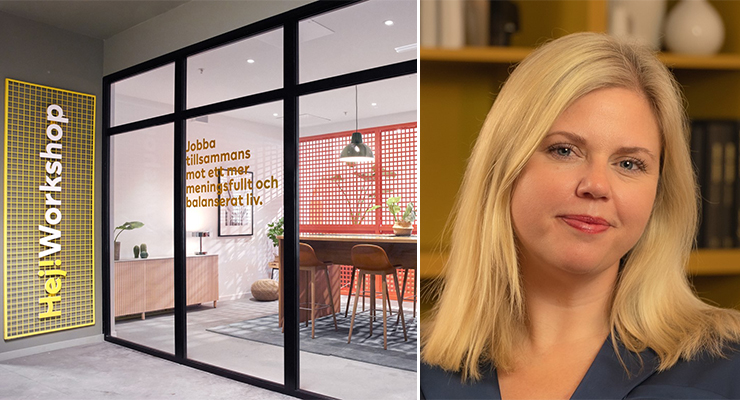By Cindy Andersen, Managing Director at Ingka Centres
At Ingka Centres, we are on a mission to redefine the retail landscape by transforming traditional shopping destinations into new, mixed-use format meeting places. This approach cherishes hyper-locality and reflects local communities’ need for physical spaces to connect, play, eat, and enjoy experiences.
The origin of the term mall is linked to an Italian game, pallamaglio, played in parks and leading to London’s famous Pall Mall. Shops and restaurants came later; malls originally meant the space and freedom to play and meet for city dwellers, and with our meeting places, we are returning to these essential human needs. We focus on meaningful experiences, sustainable offers, and outstanding play opportunities.
Our recent Life in Communities Report, based on the research we conducted in Europe, the US, and China, confirms that the habits and desires of many people across the globe are changing in response to global uncertainty. Gen Zs and Millennials crave connection, experience, and a sense of belonging. They seek welcoming and safe destinations and, simultaneously, pulse with vibrancy, offering more than just aisles and checkout counters. This shift in priorities demands a fundamental recalibration of how we approach retail space. It is no longer enough to offer space, but it is essential to provide relevance.
They are looking for brands that bring joy and make them smile, and the majority said they believe companies can do more to bring happiness to their customers. And this expectation goes hand in hand with our vision of the global importance of play. We believe that we connect, develop, repair, and express ourselves through play. For the last two years, we have conducted playful, fun, and edutainment initiatives across our portfolio, including our global PlayLab campaign. And recently we launched our SpaceLab campaign – an edutainment initiative to foster children’s and parents’ interest in space and science.
Over the coming year and into the future, we will be transforming parts of our meeting places into cultural mixed-use hubs to give young consumers such as Gen Z and, in the future, Alphas a home away from home, where they are free to assemble for unique experiences, such as music events, festivals, and sporting events. For example, this autumn, we have partnered with the Swedish National E-Sports Federation to make e-sports more accessible to many people and bridge the gap between the physical and digital worlds with a series of events in our meeting places across Sweden. This reflects a mind-shift in our industry, which has changed drastically over the last thirty years. It used to be that teenagers hanging around shopping centers and food courts were often seen as a negative, even subject to curfews and parental escort policies. This underlined how disconnected many malls were, and some still are, from the actual needs of the local community, imposing themselves on neighborhoods and relying on customers driving in rather than meeting the needs of local people.
We strive to care for our communities in an open, inclusive, and collaborative way (understand what makes them tick) and do our best to give them a sense of belonging through the hyper-local approach. We create and invest in vibrant destinations, teaming with diverse partners and offering curated experiences that reflect the local pulse. For example, our plant-forward foodhall concept Saluhall in San Francisco, which we are launching later this year, is envisioned as a center of local sustainable culinary delights provided by local vendors, buzzing with the energy of shared meals and spontaneous connections. Saluhall will also act as a community hub with a cookery school for everyone to drive positive engagement and change. Another example of the hyper-local approach is our award-winning concept, Circuit. Introduced in Sweden in 2022, it brings value to the local communities as a hub, promoting responsible and circular living, where local businesses and communities come together to share knowledge and sustainable products and services.
This shift is as much about our mindset as our physical offerings. We have challenged ourselves to move away from rigid models of monthly foot traffic, instead measuring the success of spaces that invite daily or even hourly visits. Think co-working work-life balanced havens like our Hej!Workshop, catering to the flexible work styles of the modern era. Imagine pop-up events and workshops igniting creativity and community engagement. These spaces adapt to life’s rhythms, becoming an essential part of everyday life.
We will continue to evolve how we measure our value to local communities and our success as a business. What will remain consistent is that the cornerstone of meeting place performance measurement will always be the value we create – for our visitors and communities, partners, and our planet. And where our difference truly begins is in how we measure. In this sense, we have been moving away from looking at KPIs and instead focusing on KVIs (key value indicators). This is not a matter of semantics; it is core to our approach. KPIs are more backward-looking and performance-based, whereas KVIs are forward-focused and connected to the value created for people, partners, and our planet.
I am convinced that the future of retail is about meeting people where they are, being part of their everyday lives, and creating an inclusive environment where everyone feels welcome and can express themselves freely. Traditional retail has been predictable and static for too long. We must challenge our industry to accelerate the move beyond transactional spaces and become destinations for connection, inspiration, and well-being. We will grow with our communities and tenants by co-creating locations people value and where they naturally want to come. That means continuing to surprise those visiting us with playful and meaningful activities. So, my encouragement to our outstanding teams in Ingka Centres is to ditch the predictable and embrace the unconventional – after all, a vibrant space breeds vibrant communities!

Cindy Andersen
Cindy Andersen is Managing Director at Ingka Centres.






